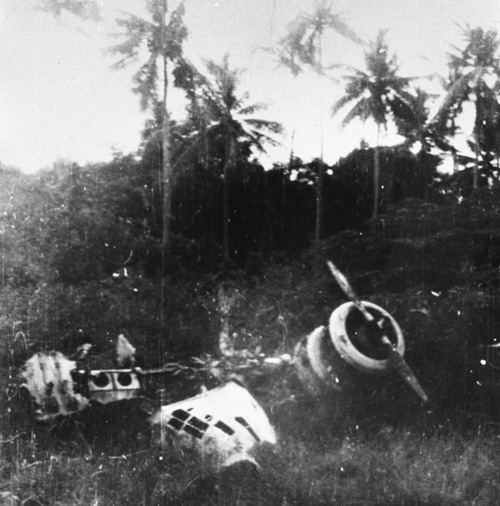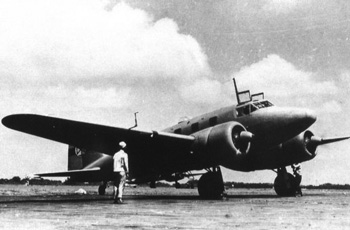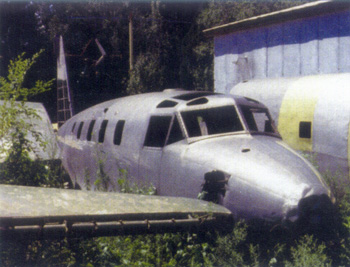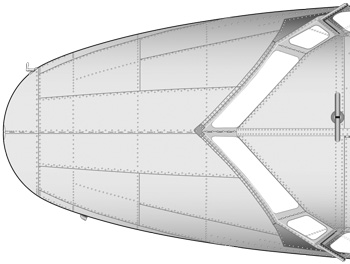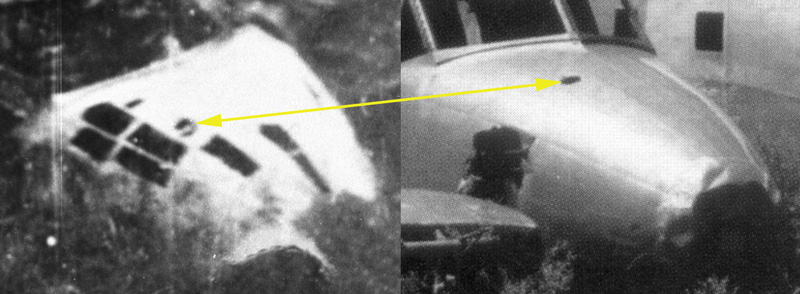|
||||||||||
| Earhart Project Research Bulletin November 13, 2009 |
||||||||||
|
||||||||||
|
A photo of a wrecked airplane that looked like it might be Amelia Earhart’s missing Lockheed Electra was first shown to TIGHAR by the late Don Lopez, then Smithsonian National Air & Space Museum Deputy Director, in February 1989. The Earhart Project had been launched only the previous November to test the hypothesis that the lost Earhart/Noonan flight had ended on the uninhabited island of Nikumaroro – and here was a photo that appeared to show the wreckage of an Electra on an island that could be Niku. Pretty exciting stuff. Over the next few years we devoted a truly staggering amount of research to attempts to either confirm or deny that the airplane was an Electra and figure out where the photo was taken. We first wrote about it publicly in the September 1997 issue of TIGHAR Tracks. We updated the research in the May 1998 issue, and again in a Research Bulletin in October of that year.
There are several features visible on the wreck – for example, the way the engine cowlings come apart – that are unlike the Lockheed 10 but consistent with the Ki-54; but we were able to conclusively identify the aircraft thanks to a photo of the fuselage of a Ki-54 in storage at the Beijing Aviation Museum. The diagnostic feature is a small, round inspection plate in the nose section. The wreck and the Ki-54 have the identical feature. The Lockheed 10 does not.
|
||||||||||
Having determined that the aircraft in the photo is not a Lockheed Model 10, it doesn’t matter where the photo was taken, but it’s interesting to speculate.
In August 1988, Capt. George Carrington, USN (ret.) brought the Wreck Photo and another photo to Lockheed Aircraft saying that they had been given to him by a former British seaman who had served aboard the submarine tender HMS Adamant in the western Pacific in late 1946 and early 1947. Carrington said that the seaman, who wished to remain anonymous, had given him the pictures because the wrecked airplane in one of the photos reminded him of Earhart’s airplane on the cover of a book Carrington had just self-published describing his own theory about Amelia Earhart’s disappearance (she was a spy).
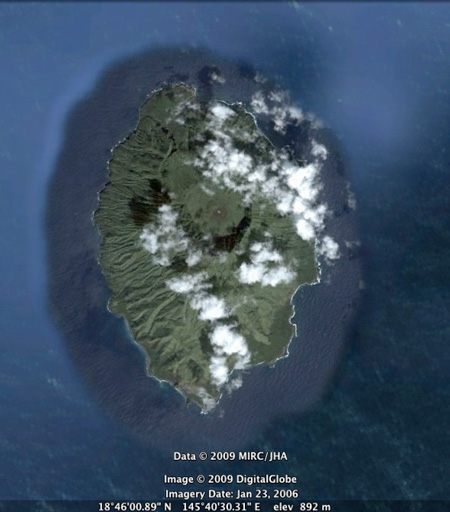 |
| Agrihan Island, Northern Marianas |
The seaman’s other photo showed the beach of a tropical island from just offshore. A group of perhaps 40 men in shorts are standing about on the beach and in the shallow water. Most are shirtless. The level beach extends several hundred feet inland and is bordered by a few tall palm trees behind which the vegetation and terrain rise steeply upward to high jungled hills in the distance. According to Carrington, HMS Adamant had put these men ashore on the uninhabited island for the purpose of gathering sand used in fighting engine room fires, and also for a little recreation. The seaman did not recall the name of the island, if he ever knew it. Supposedly he walked along the beach with a friend until they noted a couple of large coconut palms that had been knocked down. Back in the bush they found the wreckage of a twin-engined airplane and took the photo.
A check of the logs of HMS Adamant revealed that for the period during which the photo was allegedly taken – late 1946/early 1947) – she was docked in Hong Kong. Prior to and after that period she called at various ports around the western Pacific. The only uninhabited island she called at during that period was Agrihan Island in the Northern Marianas. Agrihan is a volcanic island, the highest in the Marianas Chain, and in 1946 was uninhabited because the volcano had erupted in 1917.
Carrington’s book alleged that Earhart had been abducted and taken to Saipan – an island in the Northern Marianas only 240 miles from Agrihan. It may be that the sailor, thinking that the photo showed a wrecked Electra, knew that it had been taken not far from Saipan and thus might prove Carrington’s theory correct.

